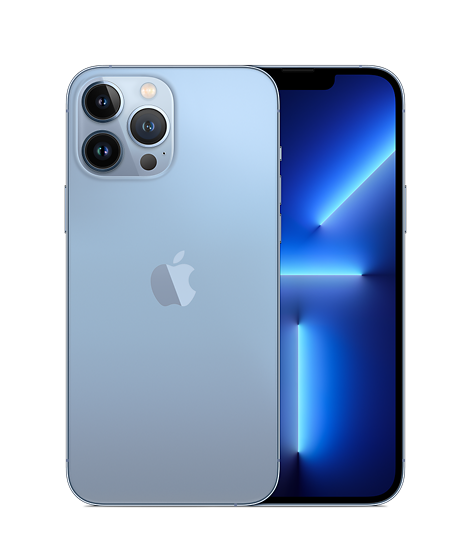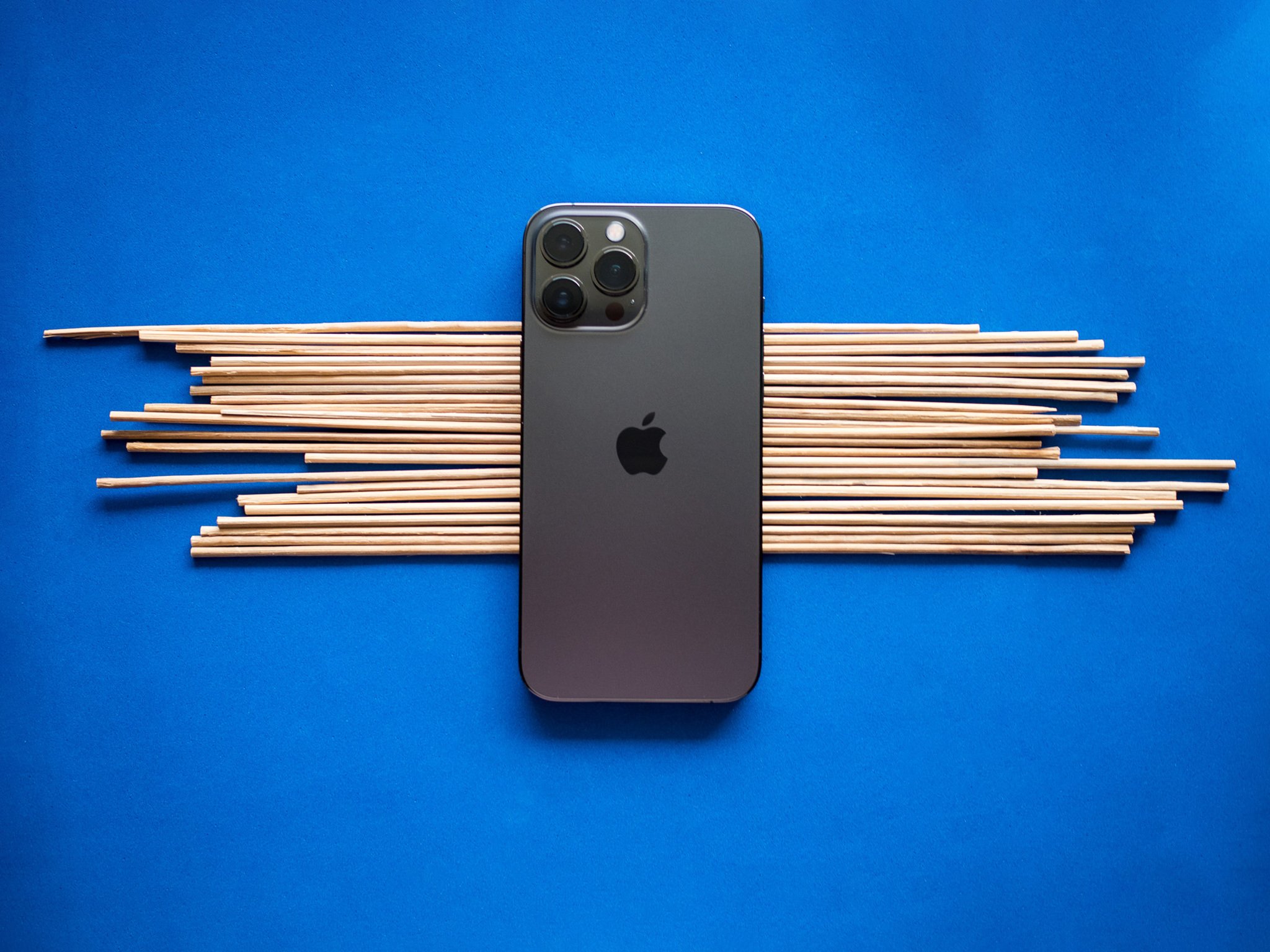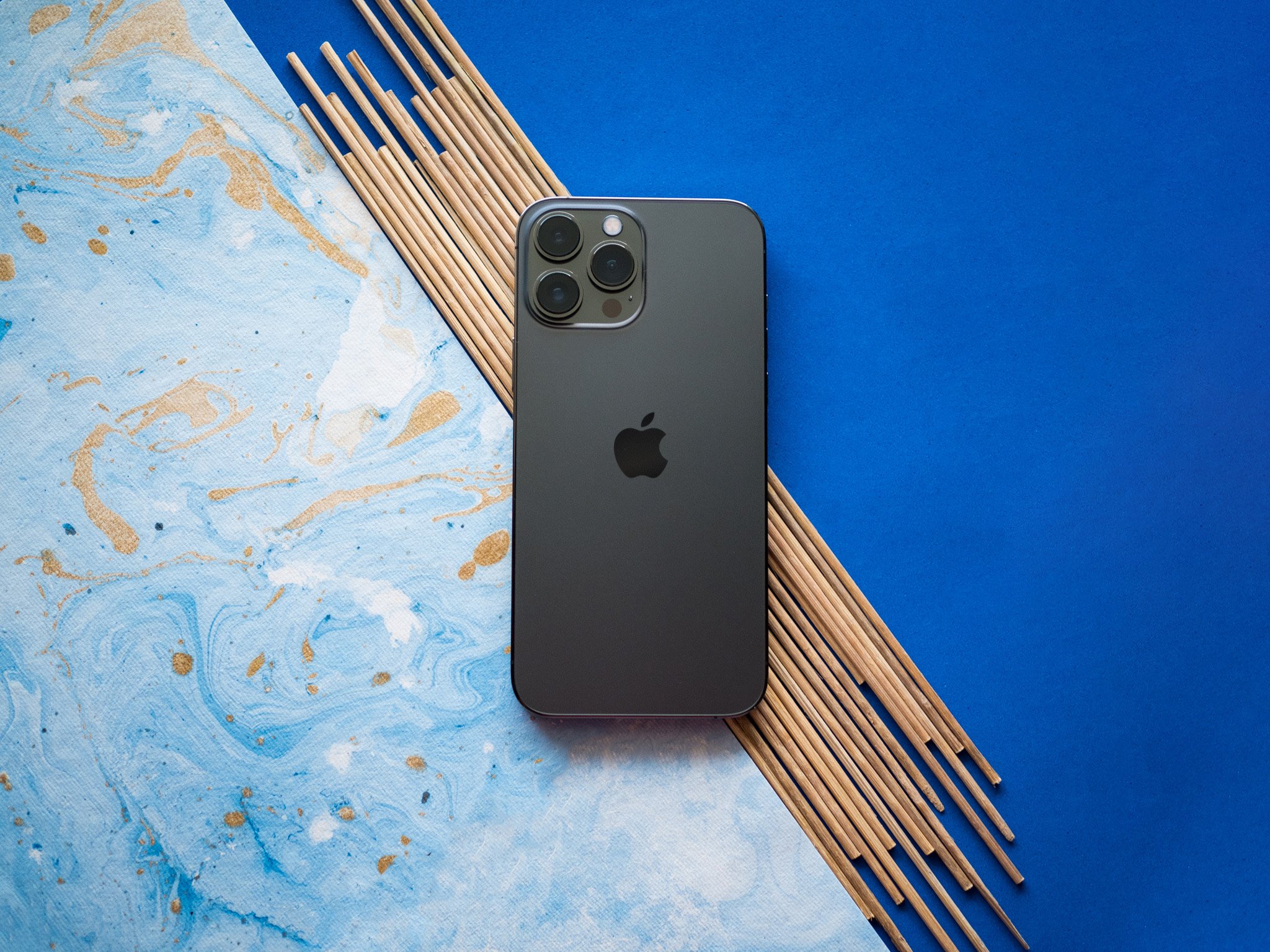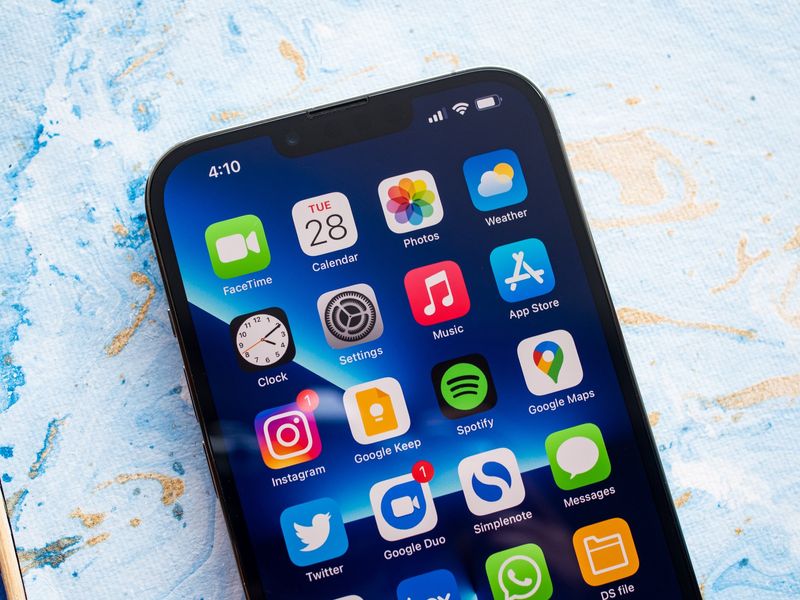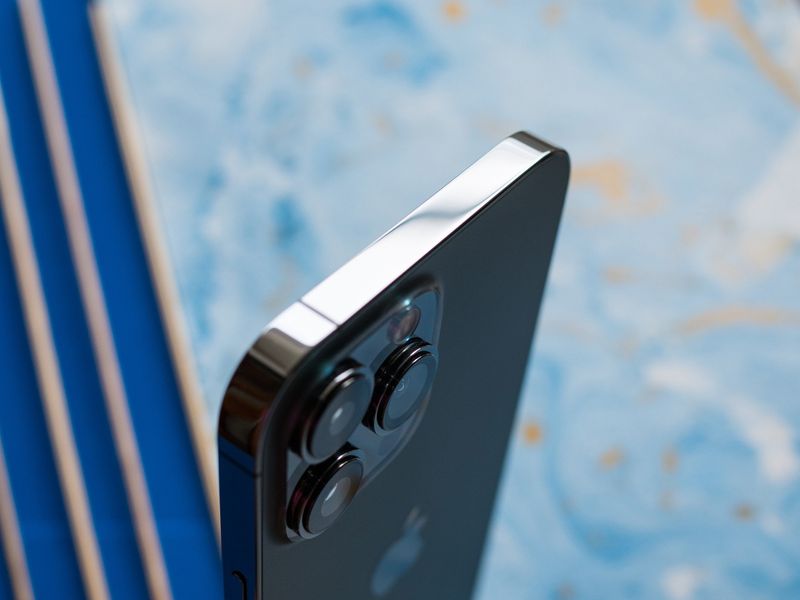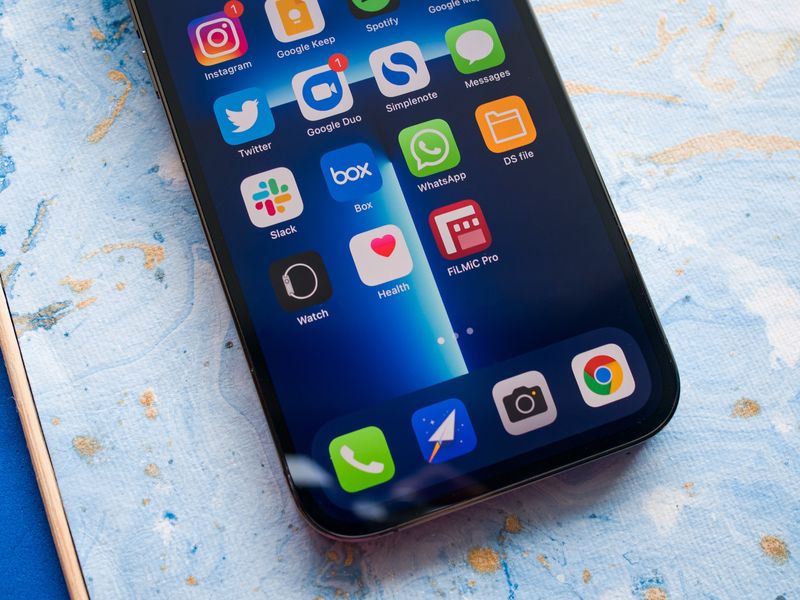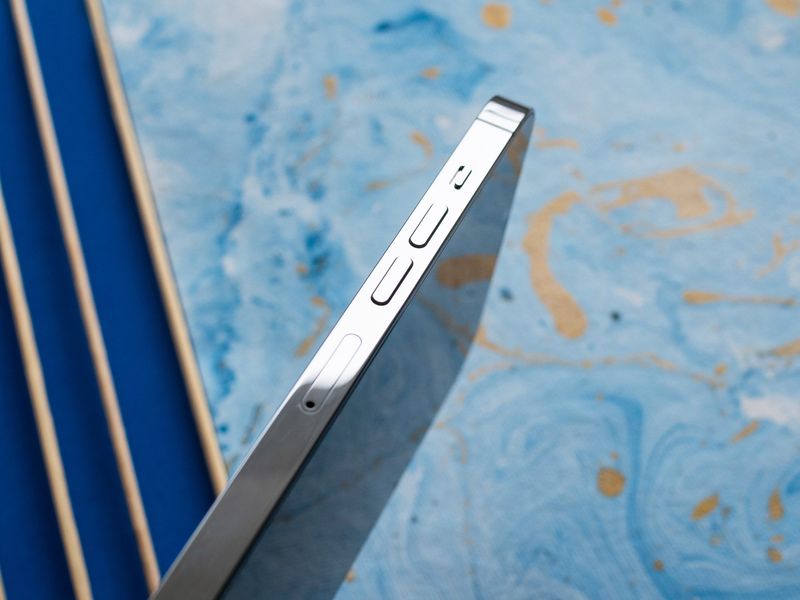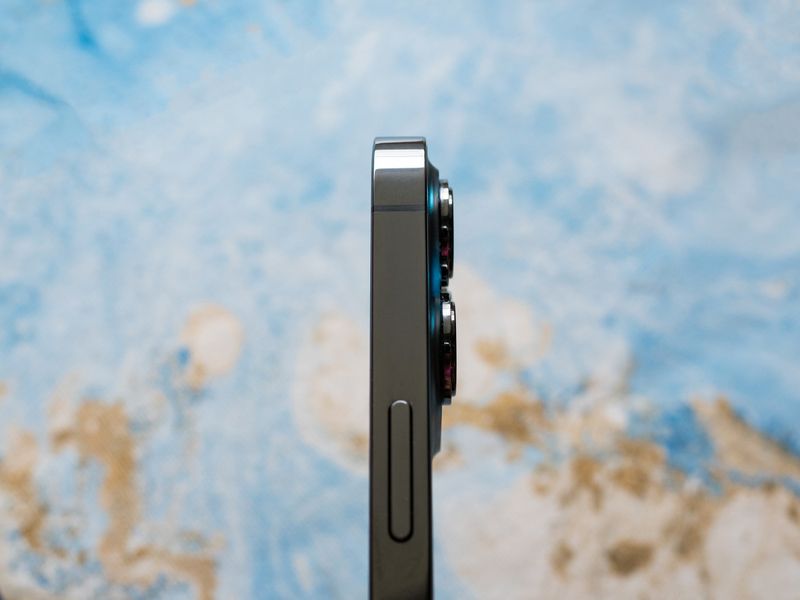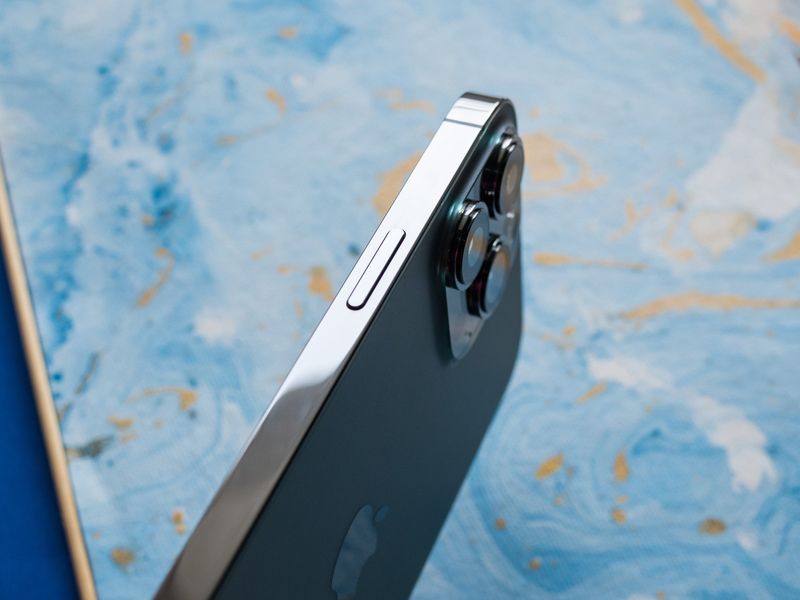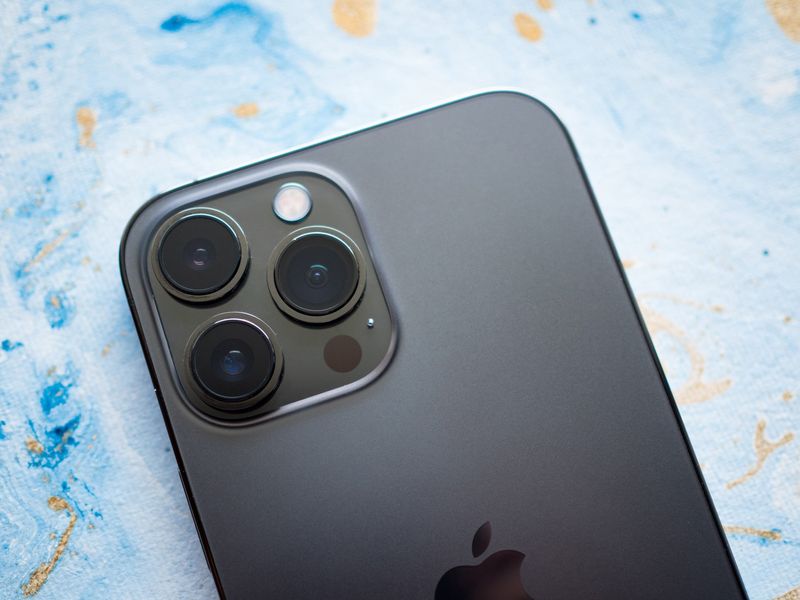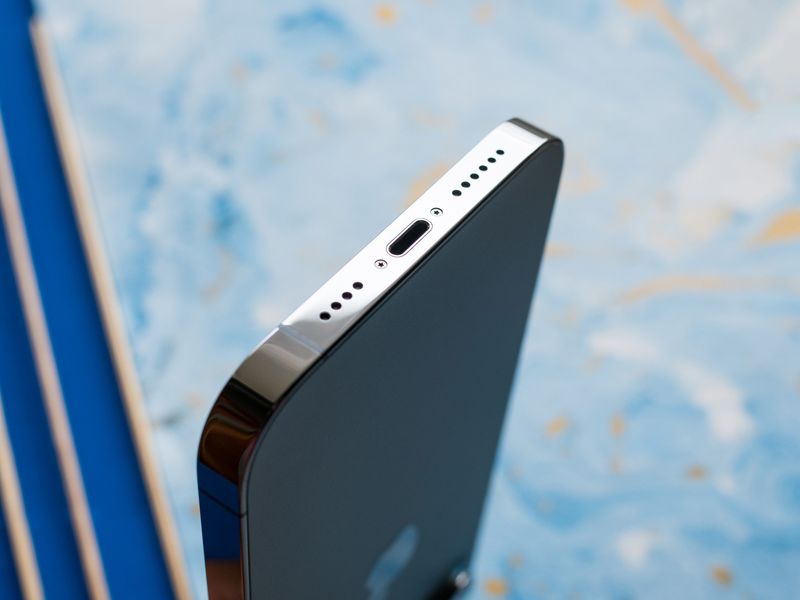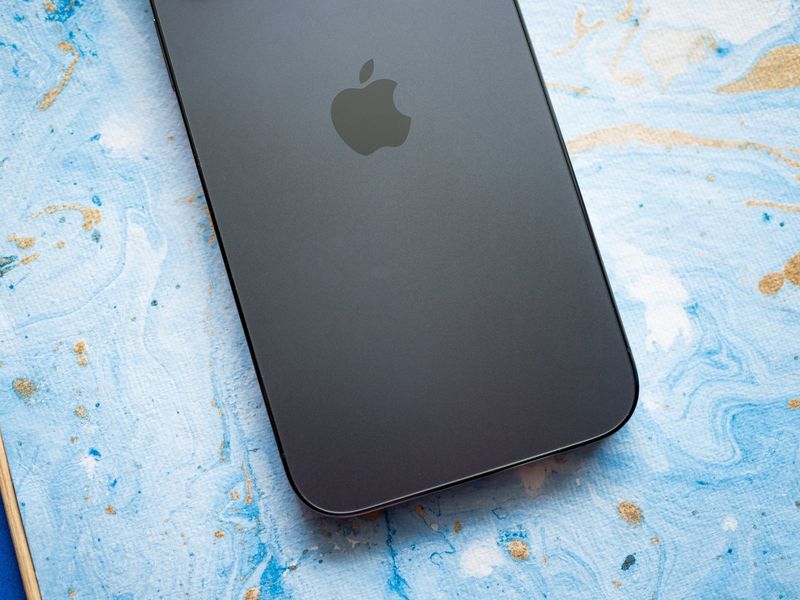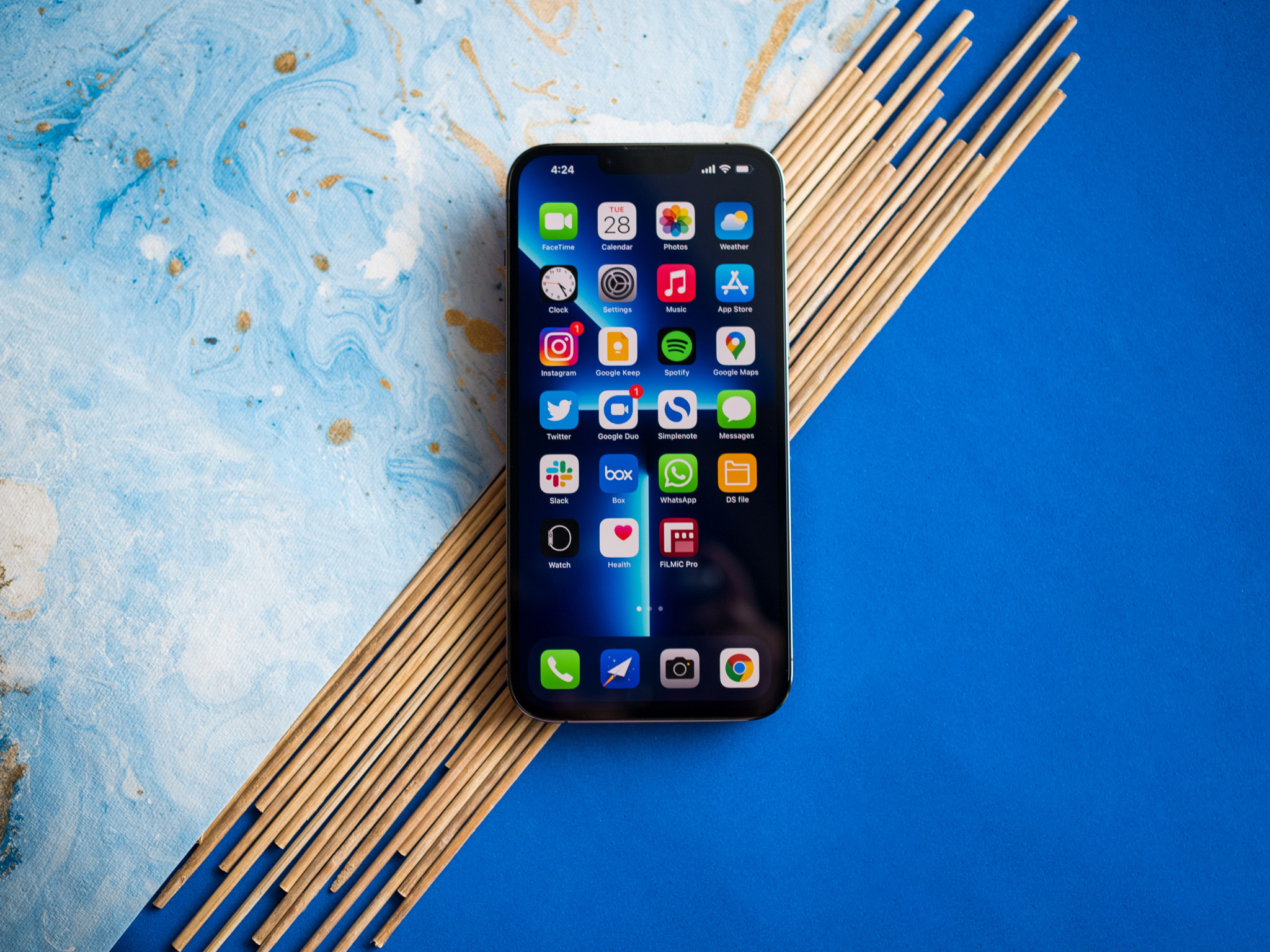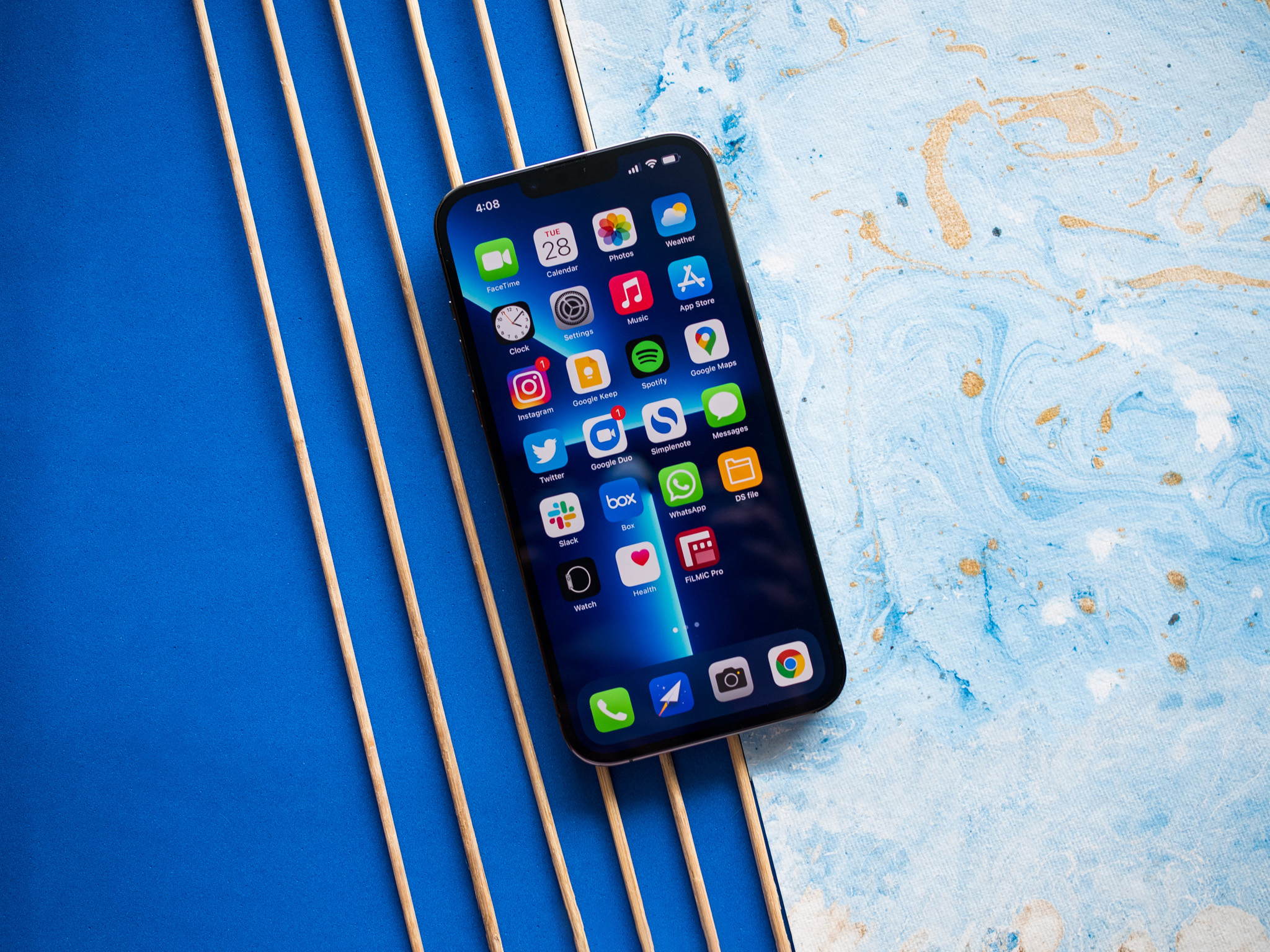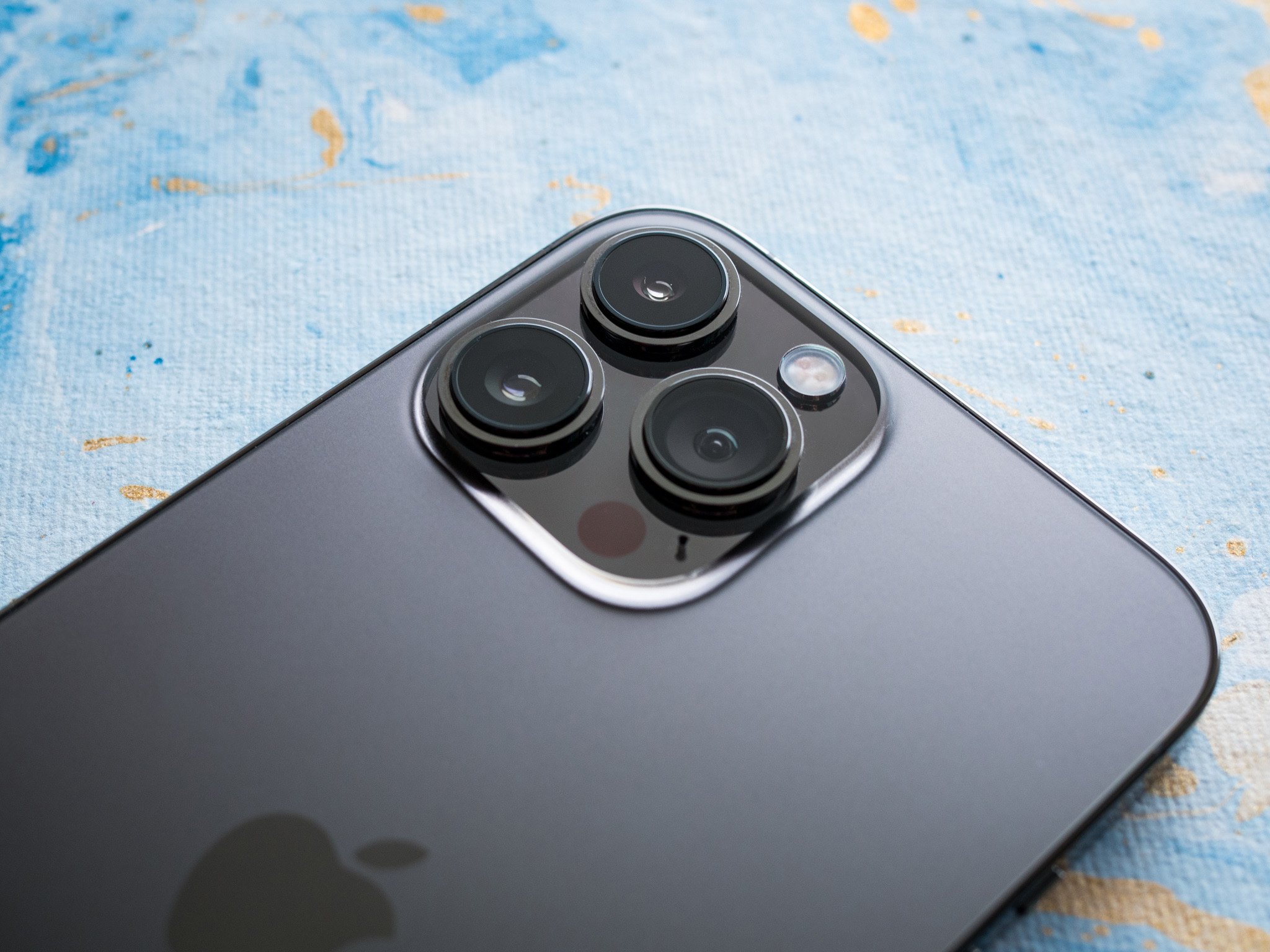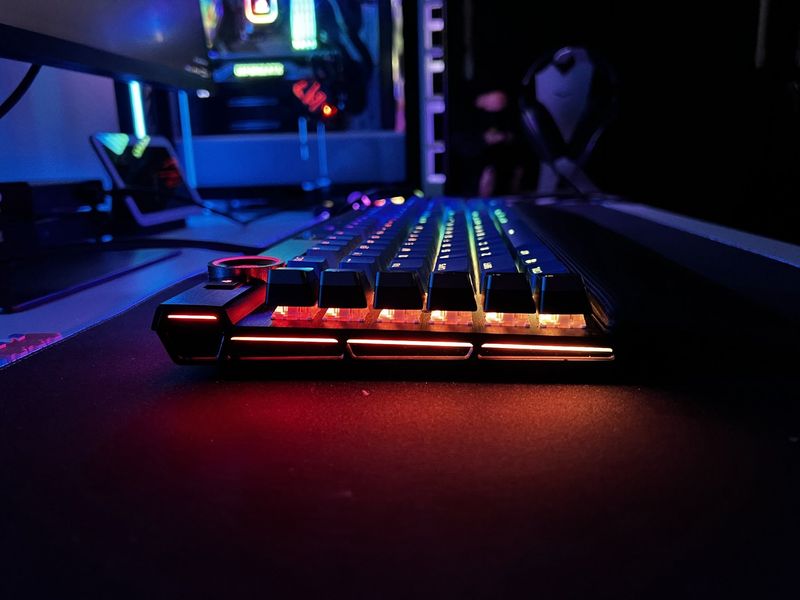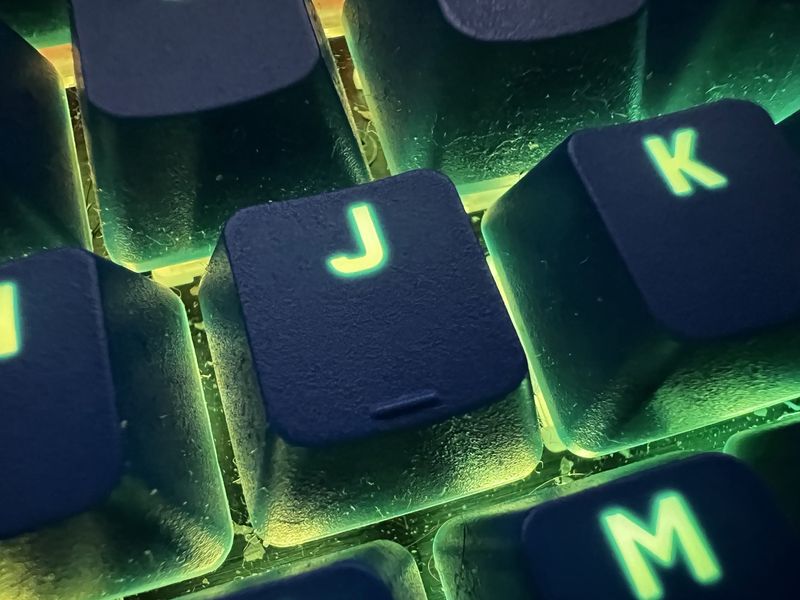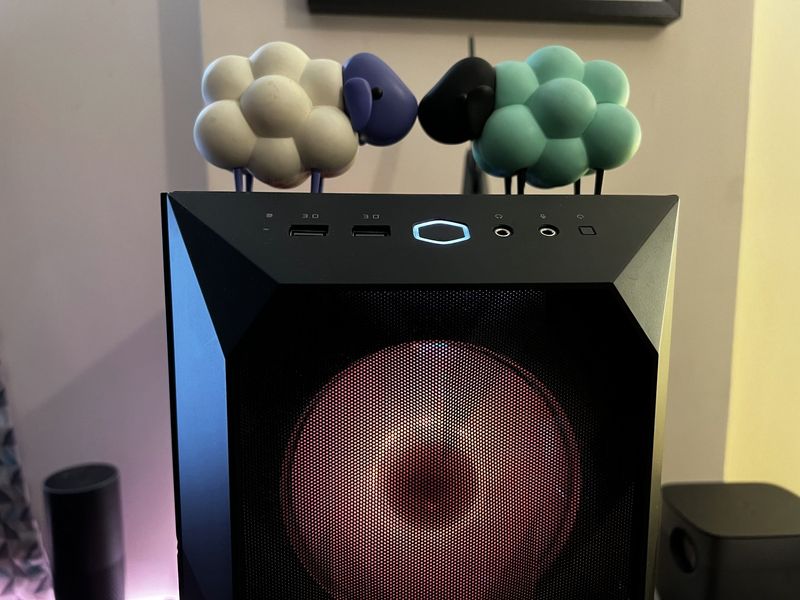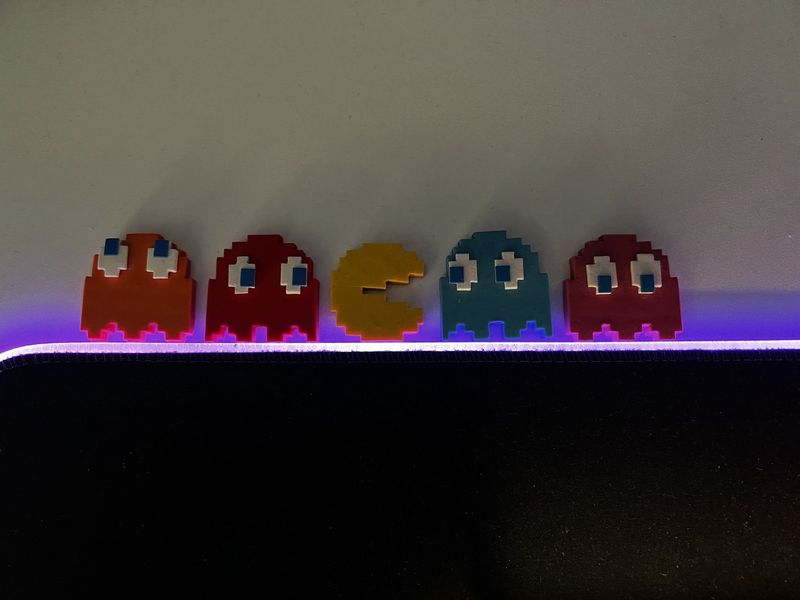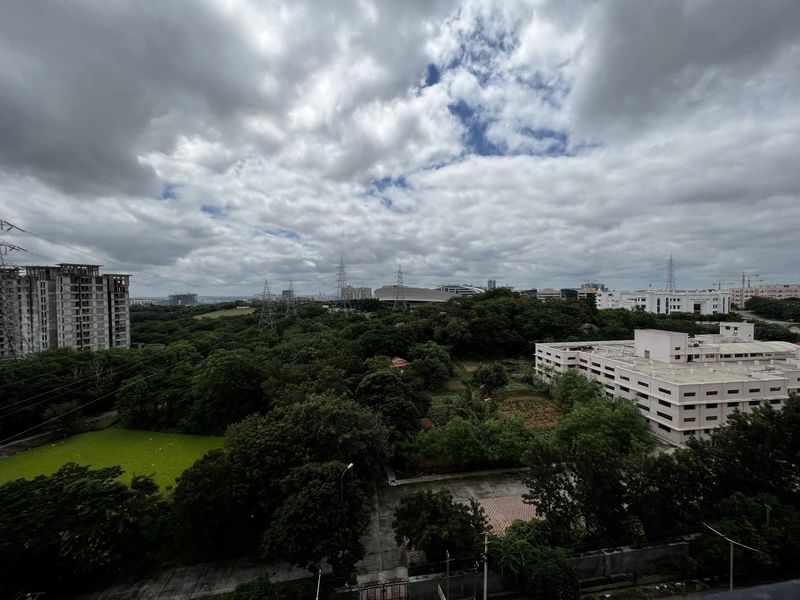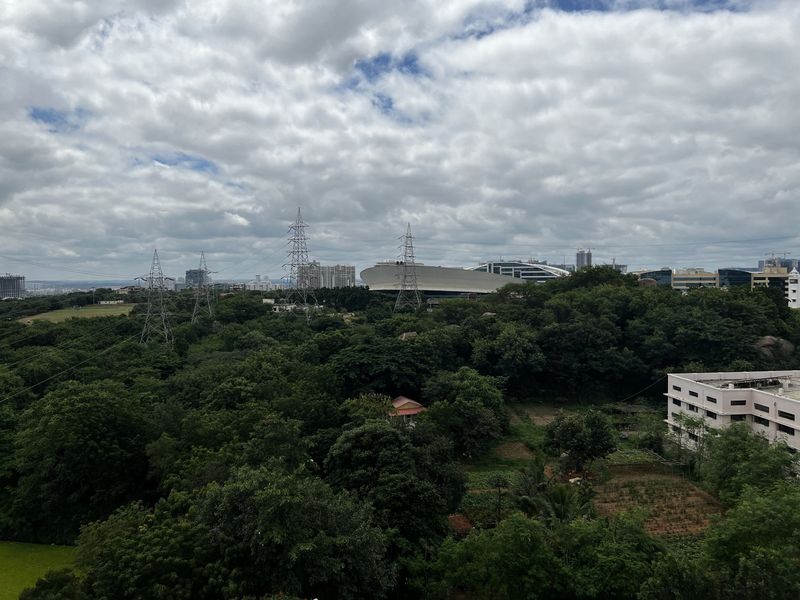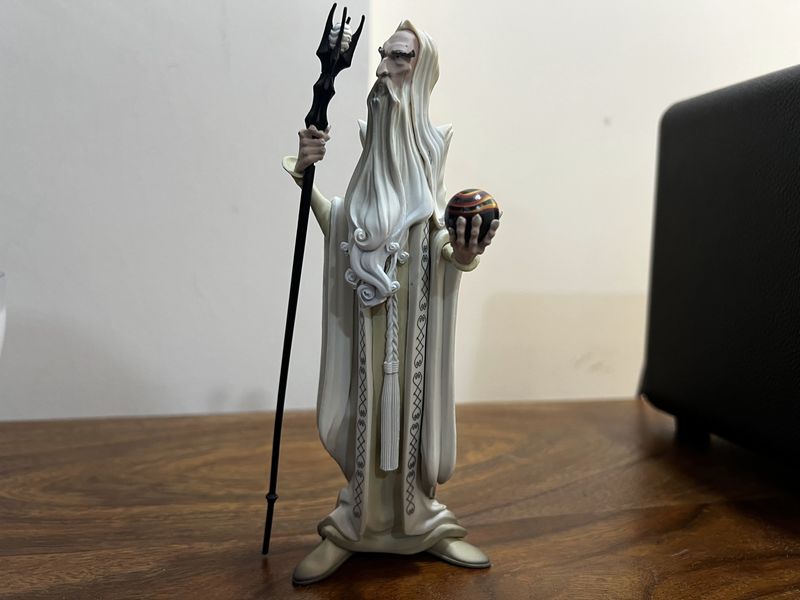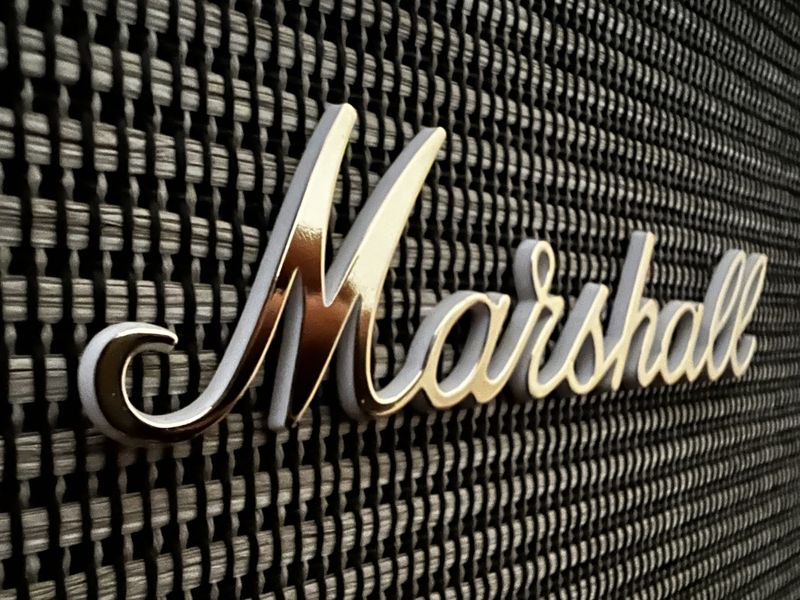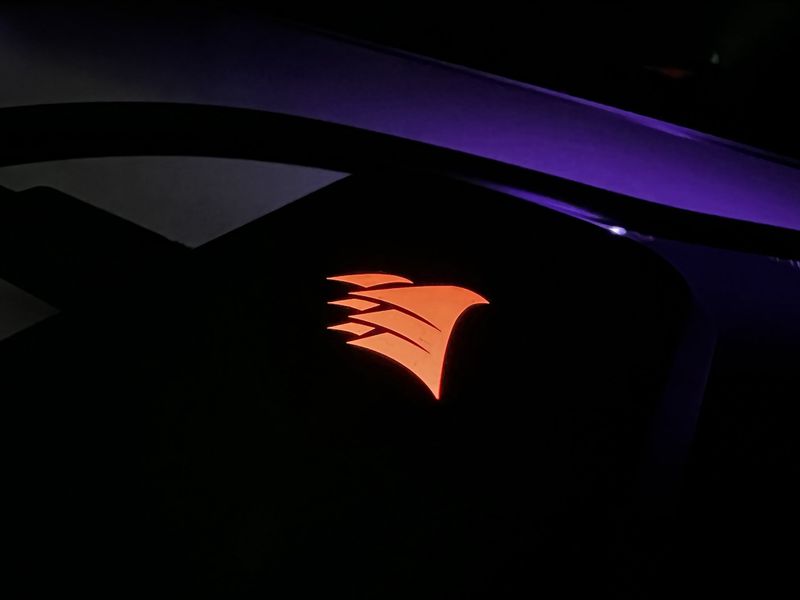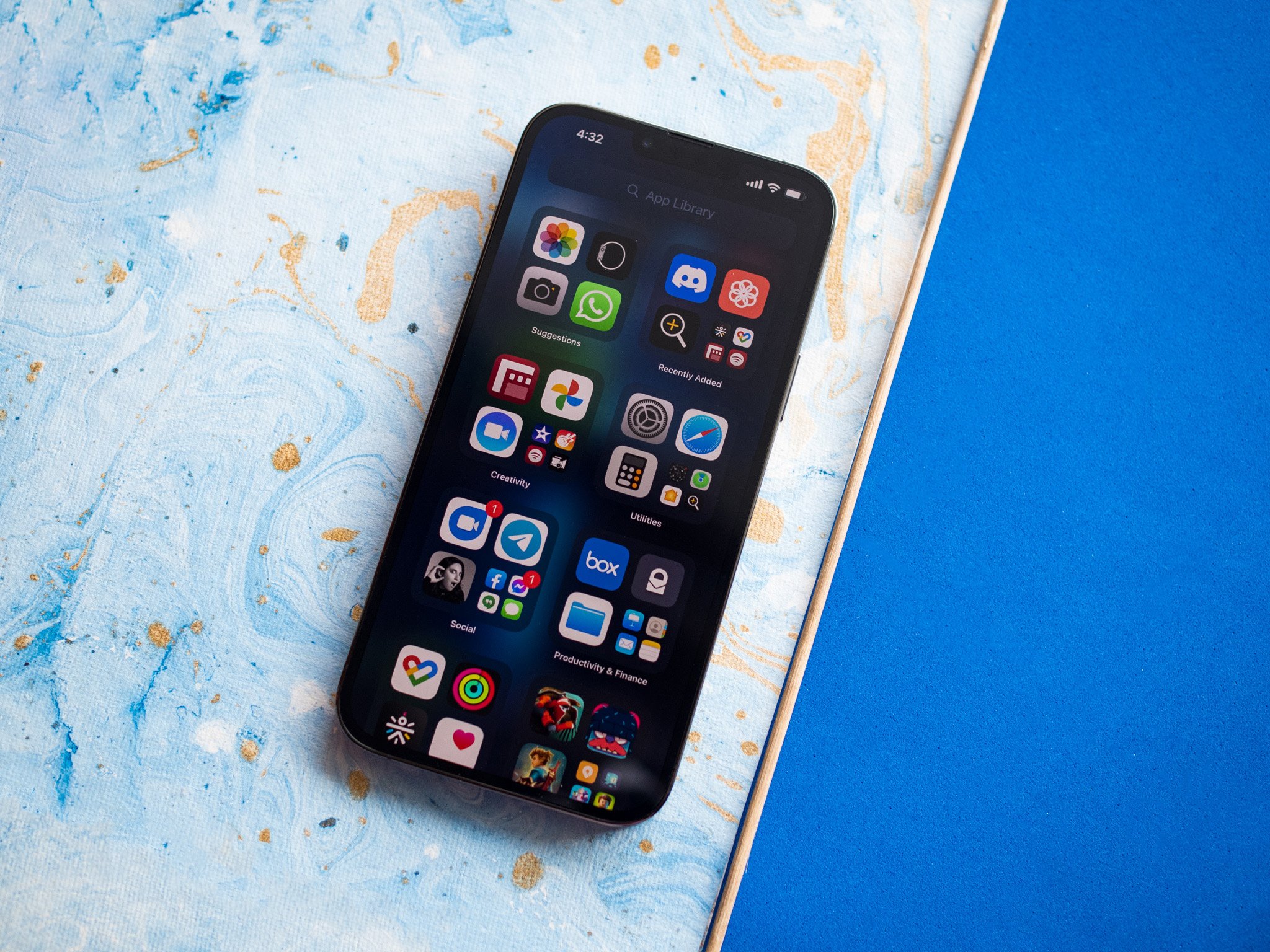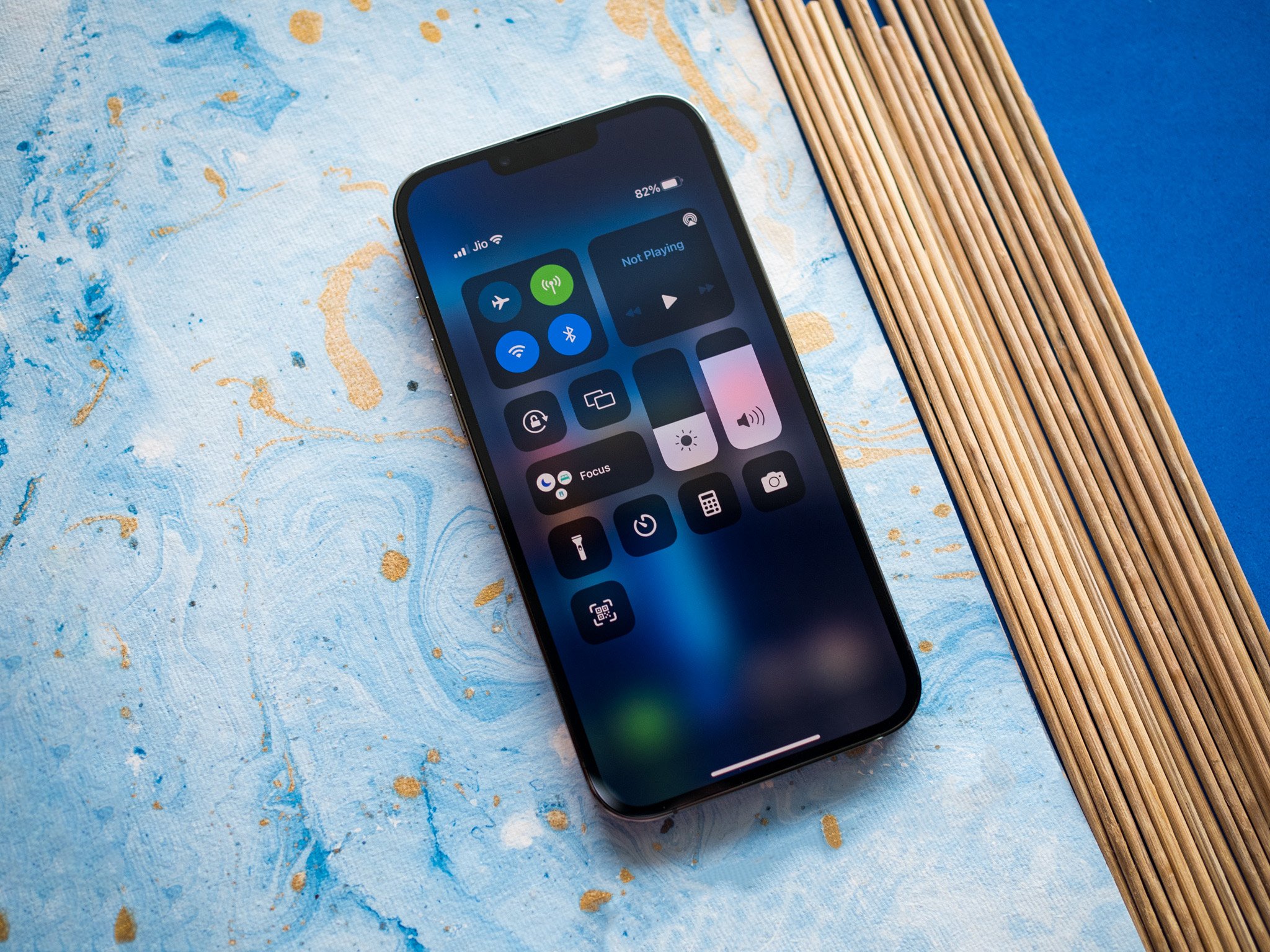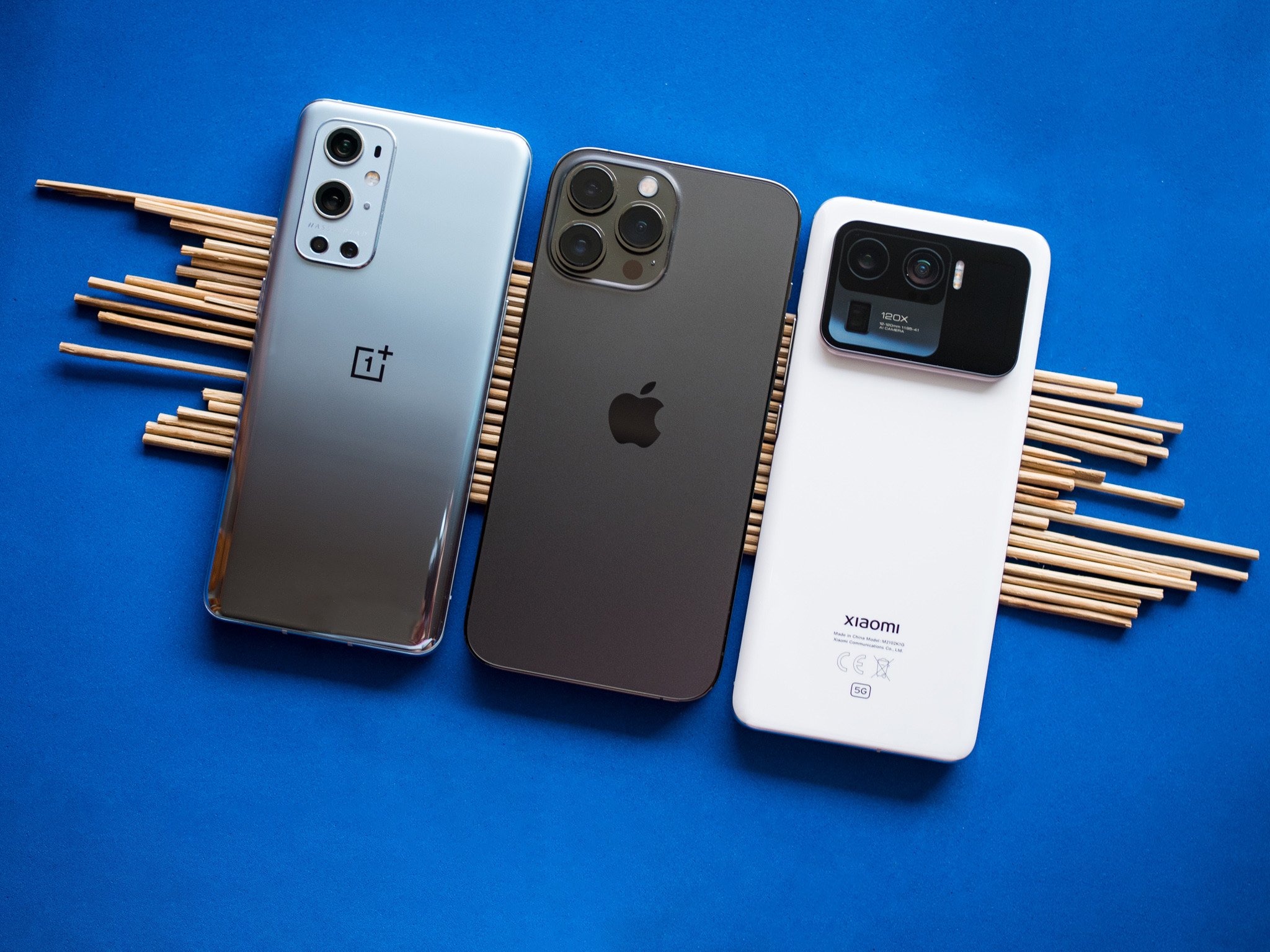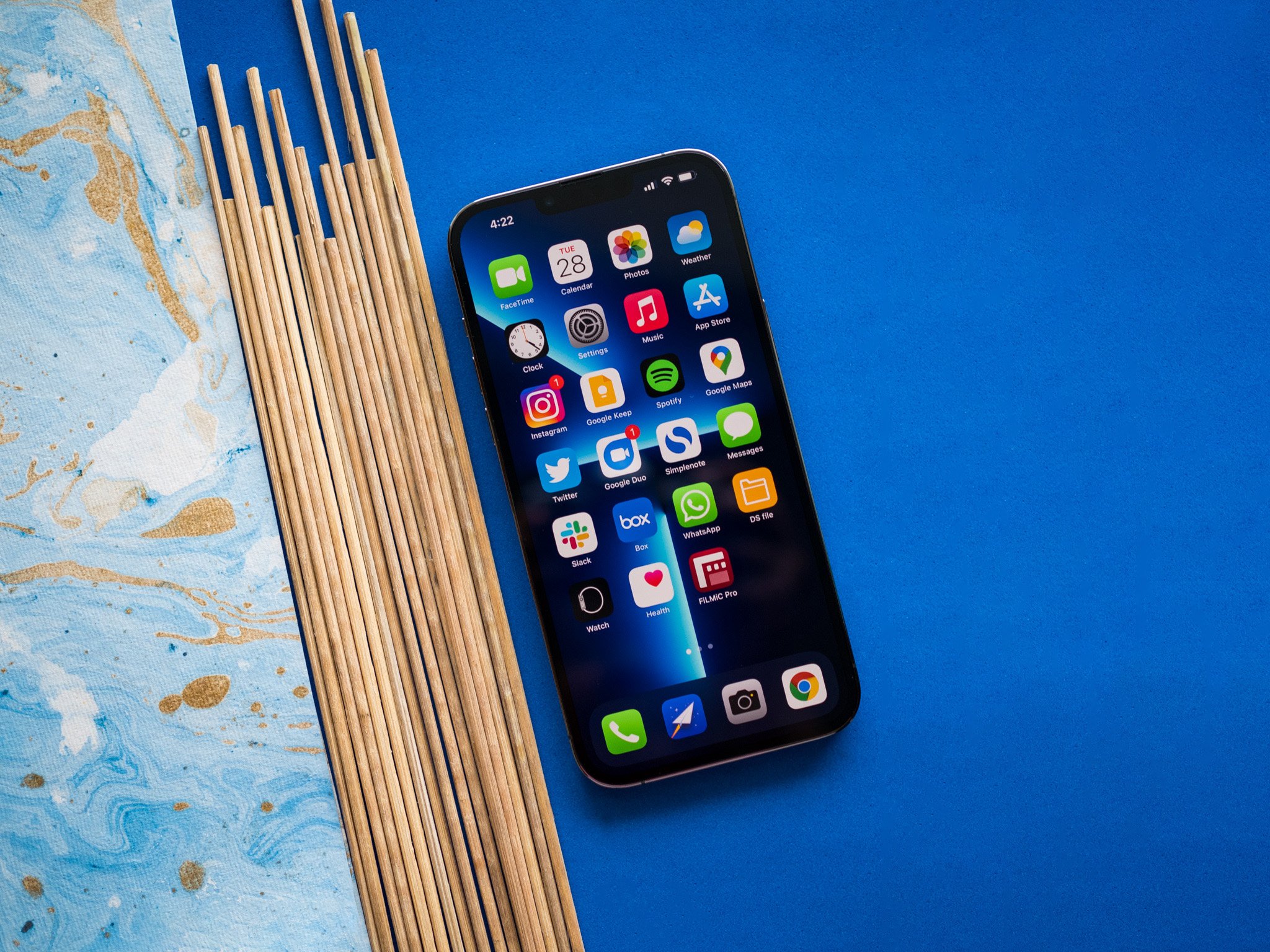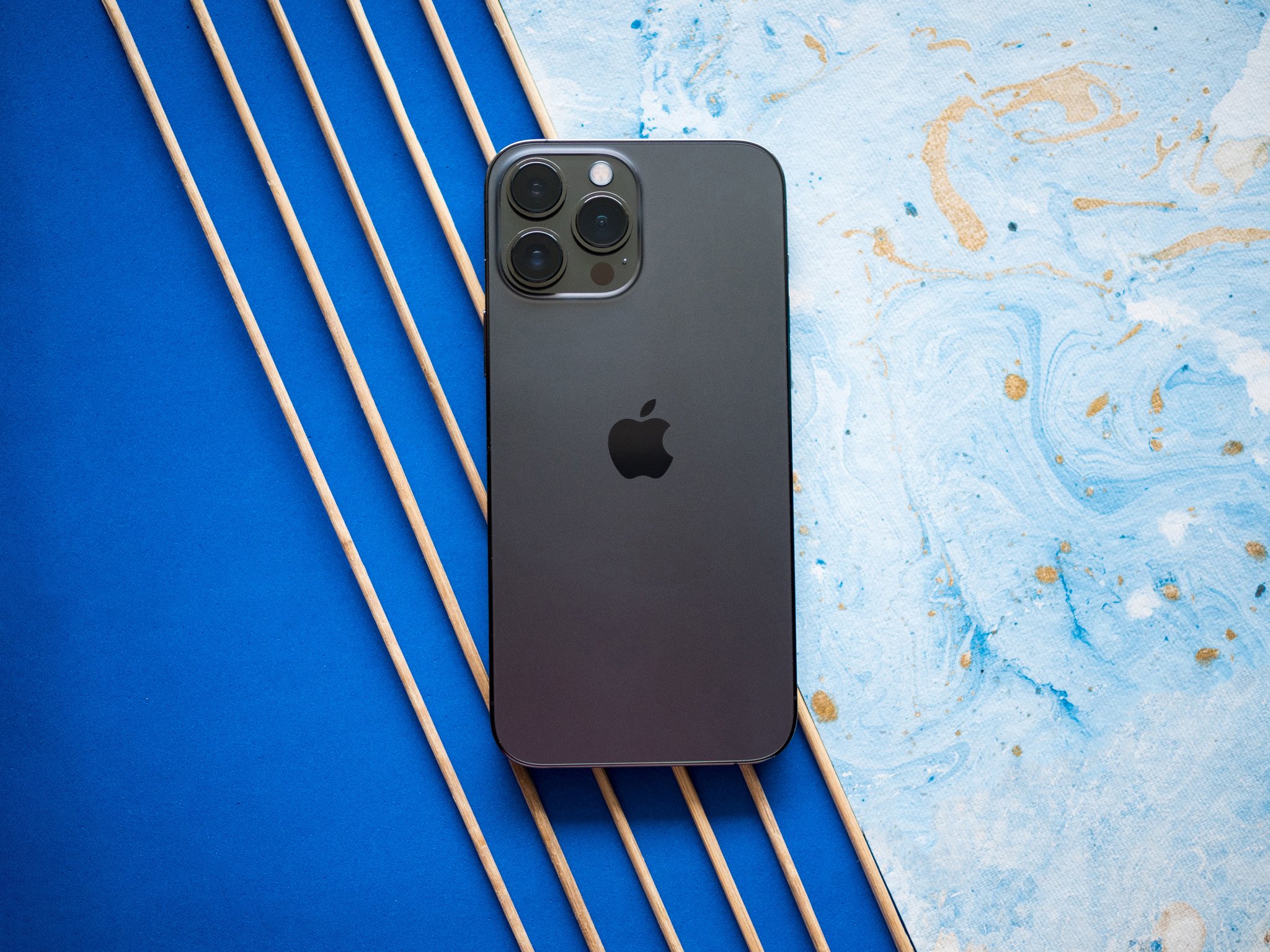For a device with a massive 120Hz screen, the iPhone 13 Pro Max has truly incredible battery life.
2021 has been an exciting year for Android flagships, with phones like the Galaxy S21 Ultra, Xiaomi 11 Ultra, and the OnePlus 9 Pro moving the needle considerably in terms of hardware and camera innovations. Samsung's bold bet on foldables is also starting to pay off, with the Galaxy Z Flip 3 and Z Fold 3 delivering updated designs that hold up to the rigors of daily life.
In that context, the iPhone 13 Pro Max doesn't seem that exciting at first glance; after all, the design itself is nearly identical to its predecessor, with Apple focusing on under-the-hood changes with this generation. That said, the iPhone 13 Pro Max introduces a slate of new features: it is the first iPhone to offer a 120Hz screen — a mainstay on Android devices over the last 18 months — you'll find camera upgrades with a new Cinematic mode that extends the iPhone's lead in video recording, and the A15 Bionic is the fastest mobile platform in a phone today.
While these are all noteworthy changes, the standout feature for me has been the battery life. In a year where Android flagships have underwhelmed in this particular regard — none of the Snapdragon 888-powered phones manage to last over a day — the iPhone 13 Pro Max wins out by a considerable margin.
iPhone 13 Pro Max
Bottom line: The iPhone 13 Pro Max doesn't change too much in terms of design, but it has the updates that matter. The 120Hz ProMotion panel makes everyday interactions much more smooth, the A15 Bionic delivers incredible performance, and the large battery allows the phone to last over a day without fail. Combine that with new shooting modes for video and cameras that take outstanding photos, and you have one of the best overall packages today.
The Good
- 120Hz panel is fantastic to use
- Battery life that's better than every other Android flagship
- Internal hardware is among the fastest on any phone
- Will get at least five years of software updates
- Stellar cameras with standout video recording features
- Water resistance and wireless charging
The Bad
- No always-on display
- Fast charging only goes up to 20W
- Still uses a Lightning connector
- Notch is still unsightly
$1,099 at Amazon $1,000 at Best Buy $1,099 at Apple
iPhone 13 Pro Max: Price and availability
The iPhone 13 Pro Max is now available around the world. Apple is slotting in the iPhone 13 Pro Max at the same launch price as its predecessor, and that means you can pick it up in the U.S. for $1,099. That's for the base version with 128GB of storage; there's also a 256GB model that costs $1,199, 512GB at $1,399, and a new 1TB option that is available for $1,599. All three carriers in the U.S. are offering enticing deals for the iPhone 13 series, so if you bought an iPhone over the last three years and are looking to make a switch, you can take a look at the best iPhone 13 deals.
As for other markets, the iPhone 13 Pro Max starts off at £1,049 ($1,435) in the U.K. for the 128GB model, going all the way up to £1,549 ($2,116) for the 1TB version. In Germany and other countries in Europe, the iPhone 13 Pro Max is available for €1,249 ($1,463) for the 128GB model and goes up to €1,829 ($2,143) for the 1TB variant.
India continues to be one of the costliest markets to pick up an iPhone 13 Pro Max; it starts off at ₹129,900 ($1,760) in the country for the 128GB model and goes up to ₹179,900 ($2,440) for the 1TB version. I'm using the 512GB variant of the iPhone 13 Pro Max, and this particular model retails at ₹159,900 ($2,168) — which is ₹1,901 ($25) more than the 512GB version of Samsung's Galaxy Z Fold 3 in the region.
iPhone 13 Pro Max: Design and display
If there's one thing about the iPhone 13 Pro Max that hasn't changed from last year, it is the design. The phone continues the same aesthetic with the flat sides and rectangular chassis, and the design at the back is dominated by the camera housing. The three camera modules are encased in large rings, and they sit in a square housing that protrudes from the chassis.
The iPhone 13 Pro Max has the same aesthetic as last year, with the cameras dominating the design.
The rings jut some more from the housing, and while there isn't too much wobble when using the iPhone 13 Pro Max flat on a surface, you'll want to use a case with the phone. The back itself is made out of glass, but you get a frosted matte finish that minimizes fingerprint smudges and makes the phone just that little bit easier to hold.
The iPhone 13 Pro Max is available in Graphite, Sierra Blue, Silver, and Gold color options, with this year's blue option offering a slightly lighter shade from last year's Pacific Blue. Other than that and a smaller notch, the design is nearly identical to last year. In fact, the dimensions are virtually unchanged; the iPhone 13 Pro Max has the same 160.8mm height and 78.1mm width as its predecessor and is marginally thicker at 7.7mm and heavier by 12g (238g).
If you've used any of the Pro Max variants over the last two years, you'll feel right at home here. However, the added heft makes the iPhone 13 Pro Max a bit more cumbersome. At 238g, it is one of the heaviest phones I've used this year — more so than the S21 Ultra (229g) and the Mi 11 Ultra (234g). The only phone that's heavier is the Galaxy Z Fold 3 at 271g, and that's effectively a tablet that folds down to a phone.
The width also contributes to the general unwieldiness. While Android phones are taller and narrower, the iPhone 13 Pro Max is shorter and wider, and I just wasn't able to use it one-handed. That said, the rectangular design works to the iPhone's advantage here, with the stainless steel mid-frame allowing you to hold the device firmly.
The biggest change in terms of design is at the front, with the iPhone 13 Pro Max touting a thinner notch that's marginally taller from last year. However, even this smaller notch looks ungainly and isn't anywhere as seamless as the hole-punch cutout that's standard fare on Android. Apple stuck with a familiar design because that's the easiest way to cram all the modules necessary for Face ID, but in 2021, the notch looks outdated.
A more welcome change is the switch to ProMotion. The iPhone 13 Pro Max comes with a variable refresh rate panel that goes from 10Hz all the way to 120Hz, and it makes a huge difference in day-to-day use. It's great to be able to take full advantage of the fluid scrolling on an iPhone, and while it isn't like the iPhone 12 was slow by any measure, the switch to a 120Hz panel gives the iPhone 13 Pro Max a level of immediacy that you just don't get from its predecessors.
The 120Hz ProMotion screen by itself is enough to entice users away from older iPhones.
Like most phones with a 120Hz panel, the iPhone 13 Pro Max uses a variable refresh rate to maximize battery life. For static content, the refresh rate will go down to 10Hz, movies and videos play at 24Hz, and games scale from 30Hz to 120Hz based on the scenario. For instance, intense fighting sequences within a game will kick the screen up to 120Hz, while navigating the menu will bring it down to 30Hz. Then there are utilities like Adobe Fresco that will dynamically scale the refresh rate based on your interactions.
While the 120Hz panel has been long overdue, Apple is currently limiting the mode to its own apps. Third-party apps and games are still at 60Hz, with Apple asking developers to update their apps to optimize for the 120Hz mode. Apple doesn't enforce any such guidelines for the iPad Pro, and it is likely that battery life was a consideration in its decision to do so here.
As for the screen size itself, it is unchanged from last year. You're getting a 6.7-inch OLED panel with a resolution of 2778x1284, HDR, True Tone, and a maximum brightness of up to 1,000 nits — 200 more than last year. For HDR content, that brightness goes up to 1,200 nits.
While the larger battery would have been the ideal time for Apple to roll out an always-on display, it hasn't done so. Like last year, the iPhone 13 series is the only flagship to offer an OLED display that doesn't have AOD.
Also, there are a few bugs with the variable refresh rate — I noticed an infinitesimal delay when the screen switched from a lower refresh to 120Hz. The first set of Android devices with 120Hz panels also had these issues, and they were fixed with a software update. It's likely that will be the case with the iPhone 13 Pro Max as well.
Both the front and rear panes of glass are protected by a custom Ceramic Shield layer by Corning that's touted to be the strongest in the industry, and while I (thankfully) didn't get a chance to see its efficacy, the same coating on the iPhone 12 allowed the device to weather a year's worth of tumbles without any issues, so I'm not too worried about durability.
iPhone 13 Pro Max: Performance and battery
Every new iPhone gets Apple's latest silicon, and the iPhone 13 Pro Max sees the introduction of the A15 Bionic. Apple is in a dominant position in the mobile SoC category with its in-house silicon, consistently delivering designs that beat its Qualcomm and Exynos rivals in single and multi-core workloads.
That trend continues with the A15 Bionic. While Qualcomm will unveil a new flagship platform later in the year, the A15 Bionic is nearly 40% faster at single-core workloads than the current Snapdragon 888, and it's unlikely Qualcomm will overcome those gains with the Snapdragon 895.
| Specs | iPhone 13 Pro Max |
|---|---|
| Software | iOS 15 |
| Display | 6.7 (2778x1284) 120Hz OLED |
| Chipset | A15 Bionic |
| RAM | 6GB |
| Storage | 128GB/256GB/512GB/1TB |
| Rear Camera 1 | 12MP ƒ/1.5 (primary) |
| Rear Camera 2 | 12MP ƒ/1.8 (wide-angle) |
| Rear Camera 3 | 12MP ƒ/2.8 (3x zoom) |
| Front Camera | 12MP ƒ/2.2 |
| Connectivity | Wi-Fi 6, BT5.0, NFC |
| Battery | 4352mAh | 20W / 15W MagSafe |
| Security | Face ID |
| Colors | Sierra Blue, Silver, Gold |
| Dimensions | 160.8 x 78.1 x 7.6mm |
| Weight | 238g |
The A15 Bionic retains the core configuration from last year's phones: you'll find two performance cores joined by four cores aimed at efficiency tasks. There's also a new neural engine and a new 5-core GPU that delivers up to 50% better performance than anything Qualcomm has to offer at the moment.
All that power leads to outstanding performance in real-world usage conditions. The A15 Bionic is more than able to handle the most demanding of games, and the OLED panel combined with stereo sound and the new chipset makes the iPhone 13 Pro Max an absolutely joy to use.
In Geekbench 5, the iPhone 13 Pro Max delivered single-core scores of 1725 and 4773 in multi-core tests. The A14 Bionic-based iPhone 12 managed 1538 in single-core and 3960 in multi-core tests, with the A15 Bionic delivering 8 to 10% better performance at single-core workloads and up to a 16% increase in multi-core tests.
The OnePlus 9 Pro managed single-core results of 1120 and a multi-core score of 3558, with both figures below last year's A14 Bionic. So while the A15 Bionic doesn't quite deliver the gains we're used to, it doesn't need to; it is already ahead of its rivals. I'm intrigued to see what Google can do with the Tensor SoC on the Pixel 6 because right now, the A15 Bionic runs rings around Qualcomm's designs.
A15 Bionic makes the iPhone 13 Pro Max faster than any other phone today.
As for storage, there's 128GB as standard across the iPhone 13 portfolio; last year's Pro models had 128GB as default, but the regular iPhone 12 had 64 GB for the base model. The iPhone 13 Pro Max also gets 256GB, 512GB, and even a 1 TB tier this year, but you will have to pay a premium if you want more storage.
Like the Galaxy S21 series, the iPhone 13 Pro Max gets global 5G connectivity. The U.S. model has mmWave as standard alongside Sub-6 bands, with global variants relying solely on Sub-6 5G connectivity — here's the full list of 5G bands for each model. There's also Wi-Fi 6 and Bluetooth 5.0, and I didn't have any issues with either. Similarly, calls went through without any hassle, with the mics located at the top and bottom picking up my audio effortlessly.
When it comes to security, Face ID continues to be the default mode of authentication, with the iPhone 13 Pro Max eschewing a fingerprint sensor. Unfortunately, while Face ID is reliable most of the time, it doesn't work with a mask; the two times I ventured out of my home with the iPhone 13 Pro Max, I had to use my passcode to unlock the phone because Face ID just wouldn't recognize my facial features with a mask on. Considering we'll all have to wear masks for the foreseeable future, this needs to change — Apple should come up with a way for Face ID to work with a mask that doesn't use the Apple Watch.
Battery life is an area where the iPhone 13 Pro Max dominates its rivals. The phone has a larger 4352mAh battery, and the optimizations with the A15 Bionic and iOS 15 combine to deliver two-day battery life. In the six days I used the phone, I averaged well over 7.5 hours of screen-on-time spread out over a day and a half.
The iPhone 13 Pro Max delivers better battery life than any other phone I've used in 2021.
There's little to no idle drain; after eight hours on the bedside table, the iPhone 13 Pro Max only lost two percentage points. If you're coming from an older iPhone, the gains here are enormous; just the battery life alone is enough to consider switching from the iPhone 11 or an older device.
The big deal here is that the iPhone 13 Pro Max manages to deliver sizeable gains even with a 120Hz screen. Of course, we'll have to wait and see how battery life is affected once Apple allows third-party apps to switch to 120Hz mode. Still, the larger battery and inherent optimizations have allowed the iPhone 13 Pro Max to blaze past its Android rivals.
For all that the iPhone 13 Pro Max gets right in terms of the battery, it is lacking in terms of charging. First of all, wired charging is limited to 20W, making it the slowest charging flagship in the market today. With Android alternatives now hitting 120W wired charging with the Xiaomi 11T Pro and delivering 65W with the likes of the OnePlus 9 and Find X3 Pro, Apple is firmly in the backfoot in this area.
Another issue is that the iPhone 13 series continues to feature the Lightning connector. With most of Apple's portfolio now switching to USB-C as standard — the latest MacBooks and iPads all charge over USB-C — it is time the iPhone also followed suit. It's understandable why Apple isn't willing to switch; there are over a billion iPhones with the Lightning port, and the accessory ecosystem continues to be a lucrative revenue source, one that the brand isn't willing to forego.
That said, a new E.U. ruling that mandates USB-C charging could mean future iPhones may switch to the standard or go wireless altogether.
iPhone 13 Pro Max: Cameras
Alongside a larger battery, the iPhone 13 Pro Max gets sizeable camera upgrades that allow it to take great photos in any lighting condition. The iPhone 13 Pro Max features a large 12MP f/1.5 primary lens with 1.9-micron pixels and sensor-shift OIS, 12MP f/1.8 wide-angle lens with autofocus, and a third 12MP module with OIS for 3x lossless zoom. The 12MP f/2.2 camera at the front is unchanged from last year.
The iPhone 13 Pro Max gets exciting camera upgrades and extends its lead in video recording.
A new addition this year is the ability to tailor the color profiles to your tastes. There are four styles to choose from: Standard gives you the most accurate photo, Rich Contrast decreases the tone, Vibrant increases the tone of an image, and Warm increases the warmth. The default values are set to 50, and you can always increase or decrease the tone or warmth manually; once you select a style, the camera uses that for all photos.
These styles are more than just a filter; they're used in conjunction with Apple's semantic segmentation to ensure that the entire image isn't affected the same way. For instance, if you pick the Warm style, it will add extra warmth to the background elements while preserving the skin tones. I used the Rich Contrast mode by default as it does a good job emulating Google's signature look for the Pixels.
This year, the marquee addition is Cinematic video, with the iPhone 13 Pro Max able to rack focus to automatically blur the background and shift focus between subjects. It is an incredibly cool feature, and the best part is that you can change focus after the fact. I didn't use Cinematic mode a lot, but the few minutes of video I shot was enough to convince me that there's a lot of potential here.
You can shoot Dolby Vision video from the iPhone 13 Pro Max — just like last year — and now it works at 4K 60fps. iPhones have always had an edge over their Android rivals when it comes to video, and the iPhone 13 Pro Max extends that lead.
The 12MP lens has the distinction of being the largest that Apple has used in an iPhone to date, and it allows the camera to take in much more light. That, in turn, leads to outstanding photos in just about any scenario. Daylight shots have plenty of detail and great color vibrancy, and the phone takes little to no time to dial in on a subject. HDR does a fantastic job retaining all of the vibrant details without overdoing the highlights, and the new camera hardware combined with the A15 Bionic's ISP give the iPhone 13 Pro Max a distinct edge over its predecessors.
The iPhone 13 Pro Max does a great job in low-light conditions as well, retaining accurate colors and better dynamic range while minimizing noise levels. A particularly interesting point is that while using night mode, the camera no longer tries to brighten the entire shot; instead, the dark areas are left as is, with the lighter areas getting more exposure.
This year, the wide-angle lens also does an incredible job, offering the same caliber of shots as the primary module in daylight and low-light scenarios. Similarly, the telephoto lens does a stellar job up to a zoom factor of 3x.
I used dedicated macro lenses on over a hundred Android phones, and most of the time, they're not worth the effort. However, there are a few devices like the Mi 11 Ultra that rely on the 50MP wide-angle lens to take macro shots, and they do a good job getting close to the subject. The iPhone 13 Pro Max utilizes a similar system; as the wide-angle lens has autofocus, it switches to macro mode when you're close to an object, letting you take photos from just 2 cm away.
Macro photos are interesting in their own right, and you get to see a lot of details that you may have otherwise missed (I learned that I have to clean my keyboard). The images look great on the phone itself, but they tend to be noisy and lack the refinement that you get with the other cameras.
That said, I had a lot of fun using this mode on the iPhone 13 Pro Max, and the only thing that's missing is a dedicated toggle to enable or disable the feature. Right now, it's done automatically, but there are a few scenarios — mainly at night — where the macro mode isn't quite as good, and in these situations, I want to be able to turn it off manually.
The only drawback here is the selfie side of the equation. The iPhone 13 Pro Max uses the same sensor as the last two generations, and it doesn't measure up to what Android phones have to offer in this area.
iPhone 13 Pro Max: Software
With iOS 15, Apple introduced a lot of new features, including Focus, Live Text, Spotlight Search, better on-device Siri predictions, A.R. navigation, and a new memories mode to Apple Photos. On the whole, the additions are similar to what's already available on Android, and it's clear that Apple is focused on tweaking the overall experience rather than overhauling the platform — unlike what Google is doing with Android 12.
iOS 15 brings a lot of useful features, but notification management is still nowhere as good as Android.
My biggest issue with iOS continues to be notification management. Google rolled out notification channels four years ago in Android 8.0 Oreo, and I use the feature extensively to fine-tune what notifications show up on my phone. For instance, I turn off most notifications from Instagram, only selecting to be notified for direct messages.
You just won't find this level of control in iOS 15. Instead, a new Notification Summary feature lets you bundle notifications from several apps, summarize them into a single card, and serve them at a predetermined time. It is a decent alternative to being bombarded with notifications throughout the day, but the fact that there's no granular control is a letdown.
I'm also not a fan of the split layout with the Control Center and the dedicated pane for notifications. I like the notification pane on Android because it gives me access to toggles for Bluetooth, Wi-Fi, and others, as well as my notifications in a single area, and while some Android manufacturers have reverted to following the iOS system (looking at you, Xiaomi), this is thankfully not the case on most Android phones.
That said, Apple has gotten a few things right in terms of notifications. There's a new Focus mode that's a turbocharged version of Do Not Disturb. The feature lets you create modes for work, driving, gaming, workouts, and more, and you can customize actions in each of these modes. Don't want notifications from social media apps in work mode? You can easily set that up. There's also the ability to select which home pages to show up in each mode, automatically trigger a mode at a predetermined time or based on an action — like connecting Bluetooth earbuds — and even automate shortcuts.
It takes a little bit of effort to configure the Focus modes to your preferences, but it is a powerful feature that cuts down on distractions and ensures you stay focused. There are other features I like in iOS 15; Hide My Email is a nifty feature that hides your primary email address, with Apple substituting that with a unique email I.D. whenever you sign in to a new website or service. It then uses a relay service to forward the emails to your primary email I.D. The benefit here is that the incoming mail goes through Apple's spam filters, ensuring your mailbox doesn't get cluttered.
If you're in the Google ecosystem, all of your favorite services work just as well on iOS.
Private Relay is another great feature that hides your browsing activity from your internet service provider. The service uses a two-part relay to anonymize your browser traffic, but the downside is that it is limited to Safari. Similarly, Hide My Email only works with Mail and Safari, so I wasn't able to use it with Newton Mail or Chrome.
While Apple has a lot of great first-party apps, I tend to rely on Google services. And in that regard, iOS 15 continues to be a great choice. All of Google's services, including Chrome, Home, Gmail, Drive, Maps, YouTube, Gboard, and Keep work just as well on iOS, and Google even introduces new features on iOS before releasing them on Android. The fact that I can now set Chrome as the default browser in iOS and change the mail client is a big deal, and one that's long overdue.
On the whole, iOS 15 is a big step forward, and while it still doesn't measure up to Android when it comes to notification management, it's clear that Apple is trying to address the issue.
iPhone 13 Pro Max: The competition
If you're looking to buy a new flagship in 2021, there are plenty of great options. The Galaxy S21 Ultra continues to be the default choice on Android, offering a vibrant 120Hz AMOLED screen, standout internal hardware, great cameras, and all-day battery life. Samsung is already testing the Android 12-based One U.I. 4 beta for the S21 series and the stable Android 12 update should make its way to the phone by the end of the year.
If you don't want a regular phone and want to try something new, Samsung's latest foldables have plenty to offer. The Galaxy Z Fold 3 in particular is a standout device that unfurls to a tablet-sized 7.6-inch screen, and it features the latest internal hardware along with IPX8 water resistance. It costs a premium over the iPhone 13 Pro Max at $1,800, but you are getting a screen that folds in half.
Then there's the OnePlus 9 Pro; like the S21 Ultra, the phone is powered by the Snapdragon 888 and has a 120Hz AMOLED screen, and the Hasselblad-tuned cameras hold their own in this category. You also get clean software with a lot of customizability and three platform updates, but with OnePlus launching a unified O.S. next year along with OPPO, it's unclear just how much the software will change.
Outside North America, the Mi 11 Ultra is a viable alternative. Xiaomi's flagship has the latest innards, and it features one of the best camera systems on Android today. It also has fast wired and wireless charging and a unique second screen at the back that comes in handy while taking selfies with the rear cameras. The main downside with the Mi 11 Ultra is that it will receive just two platform updates.
Of course, with the Pixel 6 slated for a launch sometime in October, you can wait to see what Google has in store this year. The Pixel 6 and 6 Pro feature an intriguing design, new camera systems, and custom Google silicon that makes things just that little bit more interesting.
iPhone 13 Pro Max: Should you buy it?
You should buy this if ...
You want an iPhone with a 120Hz screen
The ProMotion tech on the iPhone 13 Pro Max means the screen now goes up to 120Hz refresh rate — double that of the regular iPhone 13. You'll see an immediate difference when switching from an older iPhone, with everyday interactions feeling that much more smooth. The mode is limited to Apple's own apps for now, but it should be unlocked for third-party apps and games soon.
You need an iPhone that lasts over a day
With a larger battery and more efficient A15 Bionic, the iPhone 13 Pro Max is a battery monster. You'll easily get well over a day's worth of use even with heavy use, and more often than not, the phone lasts up to two days with a single charge.
You want the latest hardware
The A15 Bionic is the fastest mobile chip in the market today, delivering amazing performance in demanding games and just about every other use case. You also get IP68 dust and water resistance and 15W wireless charging over MagSafe.
You want the best cameras on an iPhone
With a large sensor and new shooting modes, the iPhone 13 Pro Max is one of the best phones for taking photos and shooting video.
You need a phone that gets over five years of software updates
The one area where iPhones continue to have a clear advantage over their Android rivals is long-term software updates. iOS 15 is available all the way back to the iPhone 6s Plus, a phone that launched six years ago. The iPhone 13 Pro Max will also get that level of guaranteed updates, so if you're using an older Android phone that hasn't made the switch to Android 11 and want a device that will get long-term updates, the iPhone 13 Pro Max is your best bet.
You should not buy this if ...
You need an always-on display
If you've only used iPhones, you won't notice the fact that the iPhone 13 Pro Max does not have an always-on display. But if you're interested in switching from an Android phone, know that iOS 15 still doesn't have an always-on mode.
You want a phone without a notch
While the notch is smaller on the iPhone 13 Pro Max, it still looks ungainly. If you're tired of the cutout, there are plenty of Android phones that offer a more seamless design.
You need the latest charging tech
The iPhone 13 Pro Max is limited to 20W wired charging and 15W wireless charging over MagSafe, the slowest of any flagship in 2021. With Android device makers pushing past 100W, there are alternatives available if you want a phone with faster charging.
In 2021, choosing between Android and iOS is harder than ever. At a high level, both platforms have feature parity; there's no marquee feature in iOS 15 that's missing on Android 12. Apple continues to offer a compelling ecosystem, with the Apple Watch, AirPods, iPad, and MacBook seamlessly tying in with the iPhone.
For those looking to switch from Android to iOS, this is the biggest differentiator; as much as I like using Android phones, there isn't a single brand that has managed to deliver the same level of refinement across a connected ecosystem of devices. Samsung is the only one that comes close, but even with the new Wear O.S. 3-based Galaxy Watch 4, it doesn't quite hit the mark.
The iPhone 13 Pro Max is one of the most refined phones around: the 120Hz screen is sublime in day-to-day use, the A15 Bionic is faster than any other mobile chipset in the market, the new cameras take amazing photos and videos, the battery life is outstanding, and the phone will get five years of software updates. It has its downsides: I'm annoyed that it still uses a Lightning port, 20W charging is laughably slow, and that notch is still hideous.
Overall, the iPhone 13 Pro Max holds its own against the best Android phones — and comes out ahead in a few areas. Combine that with the fact that you get a broader ecosystem of devices that are just as good, and it is a tempting option.
iPhone 13 Pro Max
Bottom line: The iPhone 13 Pro Max doesn't reinvent the wheel; instead, it brings useful updates that give it an edge over its predecessor. The 120Hz panel makes a real difference in day-to-day use, the larger battery lets you use the phone for longer, the A15 Bionic ensures there are no slowdowns, and the new cameras take amazing photos and videos.
Source: androidcentral

